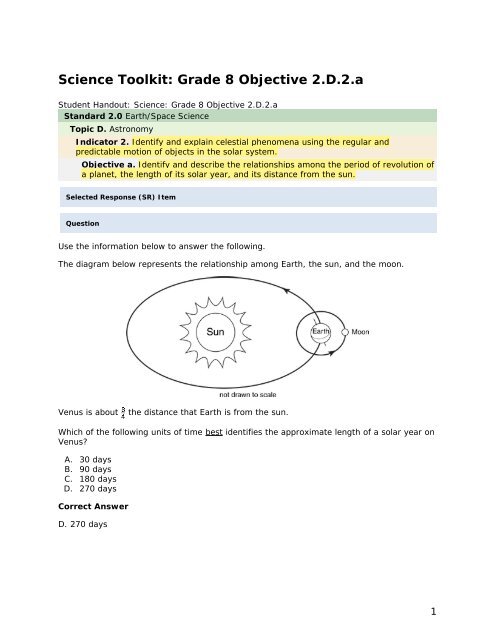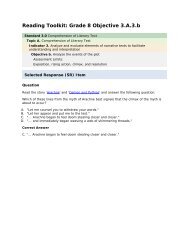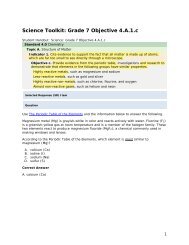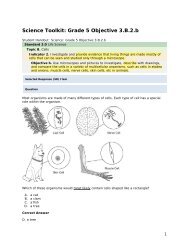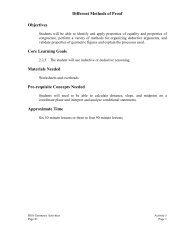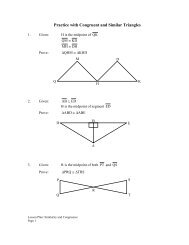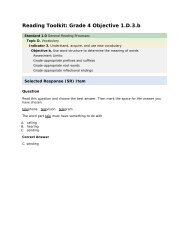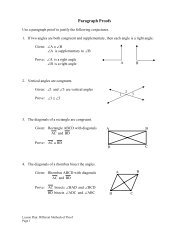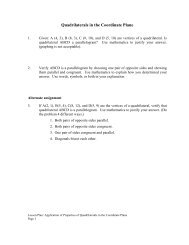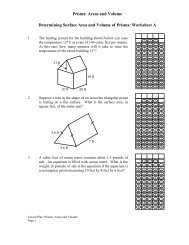Science grade 8 2.D.2.a - mdk12
Science grade 8 2.D.2.a - mdk12
Science grade 8 2.D.2.a - mdk12
You also want an ePaper? Increase the reach of your titles
YUMPU automatically turns print PDFs into web optimized ePapers that Google loves.
<strong>Science</strong> Toolkit: Grade 8 Objective <strong>2.D.2.a</strong><br />
Student Handout: <strong>Science</strong>: Grade 8 Objective <strong>2.D.2.a</strong><br />
Standard 2.0 Earth/Space <strong>Science</strong><br />
Topic D. Astronomy<br />
Indicator 2. Identify and explain celestial phenomena using the regular and<br />
predictable motion of objects in the solar system.<br />
Objective a. Identify and describe the relationships among the period of revolution of<br />
a planet, the length of its solar year, and its distance from the sun.<br />
Selected Response (SR) Item<br />
Question<br />
Use the information below to answer the following.<br />
The diagram below represents the relationship among Earth, the sun, and the moon.<br />
Venus is about<br />
the distance that Earth is from the sun.<br />
Which of the following units of time best identifies the approximate length of a solar year on<br />
Venus?<br />
A. 30 days<br />
B. 90 days<br />
C. 180 days<br />
D. 270 days<br />
Correct Answer<br />
D. 270 days<br />
1
<strong>Science</strong> Toolkit: Grade 8 Objective <strong>2.D.2.a</strong><br />
Question<br />
Use the information below to answer the following.<br />
The diagram below represents the relationship among Earth, the sun, and the moon.<br />
Venus is about<br />
the distance that Earth is from the sun.<br />
Which of the following units of time best identifies the approximate length of a solar year on<br />
Venus?<br />
A. 30 days<br />
B. 90 days<br />
C. 180 days<br />
D. 270 days<br />
2


